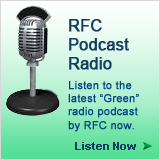Check out the transcript of RFC’s conversation with Sustainable Dave.
Everyday people throw away trash into bins, dumpsters, compactors and from there it is out of our hands. Once it’s no longer in our possession it is easy to assume that all of our trash has gone away. Where exactly is away though? Sure it does not get piled up in our own homes, it has to go somewhere right? Well, that was not the case for Sustainable Dave, who decided to keep all his trash for one whole year. Dave Chameides decided to turn the basement in his tiny Los Angeles home into his own personal landfill for a year starting the 365 Days of Trash initiative.

Crazy? Yeah we thought so too until we had a chance to sit down with Dave for our Recycling for Charity Podcast. Dave is a passionate environmentalist who promotes conservation and living a more sustainable lifestyle. Over a year ago he decided to put together a blog that would document his 365 days of trash, where he did not throw anything away for a whole year. Sustainable Dave has garnished press not only locally or nationally but world wide to showcase his endeavor. We just had to sit down with him and figure out how the idea of 365 Days of Trash came up and why he decided to do this.
The nickname Sustainable Dave is not derived from some great story but just happened to catch on from word of mouth and stuck with him. It all started as Dave was thinking of a name for his website but could not come up with anything. One of his friends had told them that in her household he was known as Sustainable Dave. Turns out that was just the name Dave decided to use for his website. A local radio station picked up on his story and gave him a call asking for an interview and throughout the interview he was known as Sustainable Dave, “And then within ten minutes, I was suddenly this entity that has kind of like grown into its own life.”


